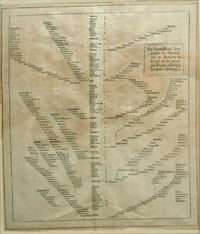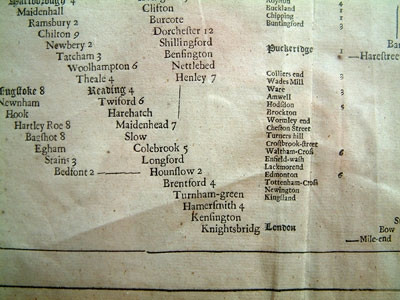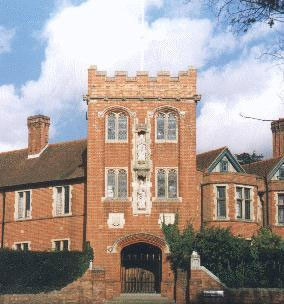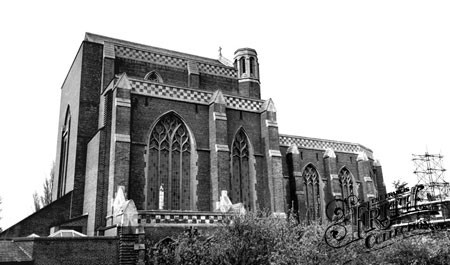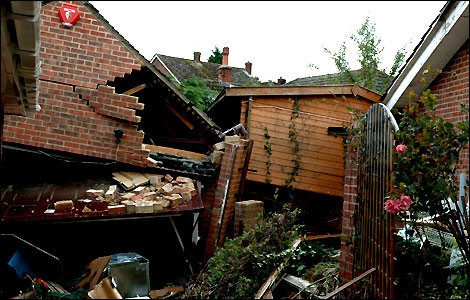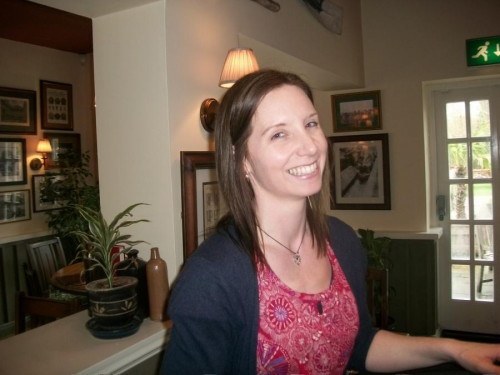To the Saxons, Woolhampton was 'Wulflafingatun' but was recorded in the Doomsday Book, written in Latin by the Normans, as 'Ollivintone'. The ending is the common Saxon suffix '-ton', meaning simply 'settlement', from which the modern word 'town' is derived. However, the rest of the name appears to be its proper Celtic title. It was possibly something like 'Alebhion' meaning 'Ridge Place', referring to the high ground in the parish which stretches alongside the Kennet Valley. By the time of the Spanish Armada in 1588, the name had evolved to 'Woulhampton'.
Woolhampton sits on the banks of the River Kennet, one of the oldest highways in the south of England. The 50 mile stretch of the valley floor, from its source on the Marlborough Downs to its outflow into the River Thames at Reading, has been used as a thoroughfare for millennia.
The river environment provided rich pickings for the hunter-gatherers of the Middle Stone Age who occupied the area nearly 8,000 years ago. Two millennia later the gravel terraces would have provided tracts of fertile, well-drained soil for the first farmers, and later on still, the Romans arrived in numbers, with many sites found of former settlements, individual villas and roads.
For early travellers, the river corridor would have offered easy, level access to the west of England. The Roman road running from Calleva (Silchester), a major provincial capital, to Corinium (Cirencester), which crossed the Kennet at Thatcham, lies half a mile south of Woolhampton. Later, that same corridor was to be used for the routes of the Great Bath Road, the Kennet and Avon Canal and the Great Western Railway.
Here is a curious early map from 1676, listing the villages encountered on the road to Bath and Wells, which includes Woolhampton, and their distances from each other:
The railway arrived in Woolhampton with the Reading to Hungerford extension in 1847, but the station was later obliged to change its name to Midgham to avoid confusion with Wolverhampton.
Due to the location of Woolhampton on the thoroughfare leading west, there were a number of coaching inns providing respite from long journeys. As well as sitting on the main road going west to Bath, Wells and Bristol, the town lies on the River Kennet, which was a major trade route carrying goods to and from the west country and London, and hence as well as the coaching Inns, a number of hostelries sprang up serving the needs of those travelling by water.
The Rowbarge is situated next to the swing bridge, and the Woolhampton lock was originally built between 1718 and 1723. The canal itself is not technically a canal, but an improved river navigation of the Kennet river. There are many sections that are in fact the natural River Kennet, which are interspersed with man-made locks and canal sections to make the river more navigable.
The history of the Rowbarge
Many thanks to local historian and author John Trigg for this account of the history of the Rowbarge. This is a link to his website where his books are listed: http://www.johntrigg.org.uk
The Rowbarge was originally the property of the Frankum family who lived in Woolhampton during the 18th century. They owned many acres of land in the village on which they built a number of properties including the village mill.
George Frankum (1763 - 1830), who spent his childhood at the present Rising Sun, was innkeeper at the Angle Inn, yeoman farmer, carrier and miller, and in 1815 built a cottage on a four acre meadow known as Birds or Bridge Close. It is this building that became the present Rowbarge. George died in 1830, the year that William IV came to the throne. His cottage on Bridge Close is listed as "a messuage used as a beer shop called William IV" In the census of 1841 this cottage is shown as the home of George Miles, coal merchant.
By the late 1850s the William IV had become the Rowbarge and the landlord was Jacob Jacobs who, on his death, was succeeded by his brother John who was a rod grower. His daughter Mary married rope maker John Hobbs in 1877, and the couple lived for a period in a disused railway carriage close to the inn. John and his bother Henry established their rope making business on the ropewalk that ran parallel between the inn and the river. Rope continued to be made here by the Hobbs family until the early 1930s. The rope was sold in the Rope Shop, the present Bow Cottage on the Bath Road. A little after their marriage, John and Mary established a grocery business in the Corner Shop (currently 'Inspirations') which remained in the family until the death in 1965 of Lennie, a son of Mary and John.
For part of the last century, the Rowbarge was let to Reading brewers H G Simmonds at a rate of £17 per annum (the Falmouth Arms at this time was still owned by the Woolhampton estate, and brewers Strong & Co paid a rent of £l5 per annum to Isabella Burn-Blyth the lady of the manor.) Interestingly, in 1903 it was disclosed that the ratio of public houses to the population of Woolhampton was 1:75 - a staggering stastic that may be explained by the lack of home entertainment rather than a love of drinking per se.
A later landlord was Daniel Payne (1904 - 1926) who together with his sons was a harness and saddle maker operating from a workshop situated on the Brimpton side of the inn - in those days, was most common for innkeepers to have more than one job.
The pub was taken over in 1934 by bearded ex-naval man Richmond 'Dick' Corp who had served in the Dardanelles campaign and was mentioned in dispatches for his conduct at the Battle of Jutland. He claimed to have sailed around the world three times, and was 'mine host' at the Rowbarge until his death in 1950. He was a skilful banjo player and organised the Rowbarge band as well as selling second-hand furniture. Later in the 50's the Christopher family took up the reins. John and Kit Christopher owned the pub until 1966.
A familiar figure crossing the level crossing en route to collect his daily newspaper clad in pyjamas and dressing gown, was actor turned landlord Larry Naismith. During his career he appeared in over 20 films including "Boy on a Dolphin" with Sophie Loren in 1957 and in 1972 starred in "The Amazing Mr Blundell". In the 1970s he reached a wider public when he appeared in the regular TV series "The Persuaders" with Tony Curtis and Roger Moore.
Captain Hawkes
As we have seen, due to its location on the great Bath Road, Woolhampton was well known for its coaching inns, one of which was the scene of the capture of the infamous highwayman, Captain Hawkes, aka "Flying" Hawkes. This man was best known for using a huge number of disguises to befriend unsuspecting travellers and acquire information about who was worth robbing.
On one occasion, Hawkes dressed as a pious Quaker and visited an inn in Slough, where he met a pistol-wielding young show-off who boasted of his fine guns and his wealth, and declared that no highwayman would ever get the better of him
Later, on the road in East Berkshire, the young dandy found himself unarmed and facing a familiar but dangerous highwayman, who proceeded to rob him, warning him not to be so boastful in future. Delighted with his haul, Hawkes rode on to Woolhampton where he rested at an inn, believed to be the Rising Sun. While there, a fight broke out in the bar between two locals. The robber captain tried to intervene, only to find himself amid red-breasted Bow Street Runners, a prototype police force, who promptly arrested him.
The Church of St Peter
The church of St.Peter was rebuilt in 1861 at the expense of Squire James Blythe who also did the same for St Peter's at neighbouring Brimpton in 1869. The nave walls of the old church are actually encased within the present walls. The church consists of a chancel, north vestry, nave, and north and south transepts. There is a wood and stone south porch and over the west gable is a small wood bell-turret with a shingled spire. Thus it has now lost what may have been the most interesting font in the county. It was apparently a 12th century carved stone vessel featuring lead figures, probably saints, one of which was a man with a book and key (St. Peter). It has long been said that this object is safely buried beneath the church floor, but no-one has ever discovered it.
Douai School and Abbey
In 1786 the Earl of Fingall, the squire of Woolhampton, sold his Woolhampton estate and moved to Ireland. His family had been recusant Catholics and had maintained a chapel and chaplain at Woolhampton House (now Elstree School). On leaving the neighbourhood he left his chaplain to minister to the local Catholics who endowed him with some seven acres of lands and some cottages.
In 1829 Fr Stephen Dambrine was appointed to Woolhampton. He established a school and embarked on a building programme which included a chapel in the Gothic style, opened in 1833 to replace the chapel in Woolhampton Lodge, and which itself was replaced by the present St Mary's in 1848.
The Benedictine community of St Edmund were expelled from Douai, France, in 1903, and were offered the site at Woolhampton by the Bishop of Portsmouth. They settled there and combined their school, St Edmund's College, with St Mary's College, so forming the new Douai School.
The Abbey Church was partly built between 1928 and 1933 and completed in 1993. Here is a photo of the Abbey from 1965:
The great flood of 2007
On July 20th 2007, torrential rains turned parts of the A4 in Wollhampton into a raging river, with waters rising up to car window level as they surged through the gardens and homes of the town. Here is a report of the flood written by Patra Cooke, a reporter for Newburytoday.co.uk:
"Bill Owen, 67, and his wife, Mary, 68, watched as a five foot high torrent of water demolished a brick wall, surging through their garden and adjacent properties on Woolhampton Hill last Friday (July 20). Mrs Owen said: "It had burst through the fence over in the far corner of next door's garden and it had just come through in a deluge, an absolute torrent."
The water swept away the Owen's garden sheds and greenhouse and demolished a six-foot-high fence on the other side of the garden. The fence crashed into a two bedroomed chalet, owned by their neighbours, Victor, 52, and Victoria Davies, 48. Mr Owen said the chalet hit the roof of the Davies' bungalow so hard that it knocked bricks down the chimney. The chalet debris, transported by the surge of water, demolished the brick garage of next door neighbour, Malcolm Withers, 48.
The rubble created a dam, blocking the path of the flood waters, which were threatening to break through and cause even more destruction. Mr Owen and Mr Davies struggled in chest high waters to hack through the dam in order to release the pressure.
"We were frightened that the pressure of the water would push the roof off the bungalow," said Mr Owen. At one point, he was nearly swept away by the floods but was saved by Mr Davies, who grabbed the arm of his coat.
Mr Owen said: "The big culvert was probably blocked. It should have taken the water. At the backs of the gardens there is a big pipe that runs down there and it must have been blocked up because the water just poured down the hillside. The culvert was blocked by an oak tree, which had been brought down by the force of the water."



